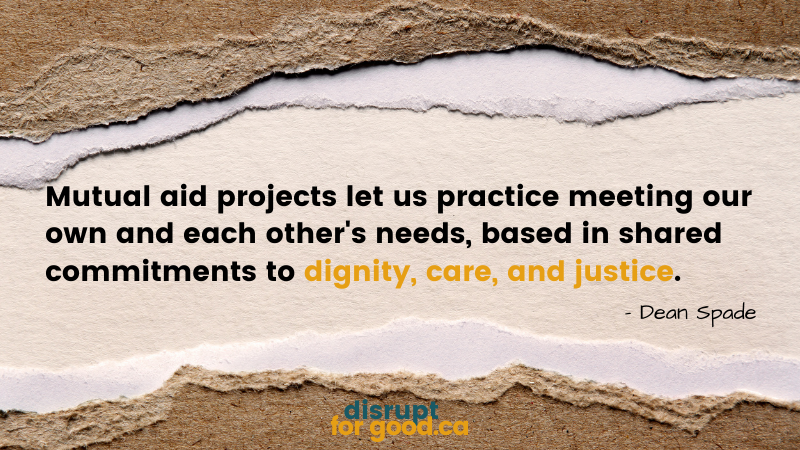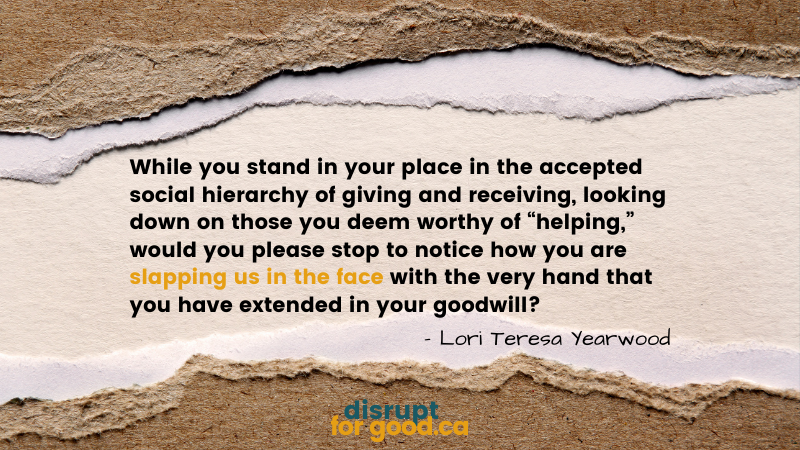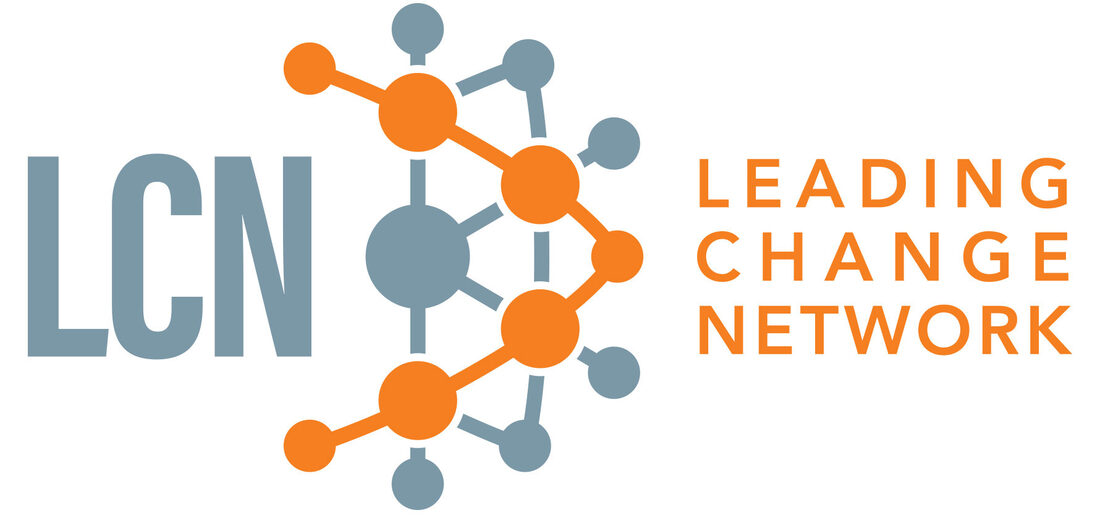|
Friends, I’m reading Mutual Aid by Dean Spade, and it’s shifting everything for me. I’m not exaggerating. I work with a number of non-profits, and I almost feel like I need to read this book once for each organization so I can focus on how it should be applied in each setting. If you’ve been here very long at all, you know I’m paying attention to how we talk about our work as non-profits, and using a justice approach so we are doing social change, not just social service. But Spade is pushing me further in the how we organize for social change, and SOLIDARITY is my word for 2022. Because all the bits that make me uncomfortable about how we are working currently, like professionalizing taking care of each other, and the saviourism that creeps in, and not doing a good job of including people with lived experience, that all gets blown apart with Spade’s guidance in mutual aid projects and moving toward “solidarity over charity.” The author provides lots of practical advice on setting up mutual aid organizations, but for me, the biggest takeaways are around foundational values and messaging. Let’s back up. What is mutual aid? “Mutual aid is the radical act of caring for each other while working to change the world,” according to the book flap of Spade’s book. It goes on: “Survival work, when done alongside social movement demands for transformative change, is called mutual aid.” So first of all, full points for marrying social service and social change, addressing immediate needs while fighting for long-term change. But then, the author lays out such a compelling case for mutual aid compared to our traditional charity models that I can’t help but want to burn it all down and start over. He says there are three key elements:
You had me at mobilize, Mr. Spade. Then again at solidarity, and participatory. And again at not waiting for saviours. I’m part of four coalitions, where everyone is doing the coalition work off the side of their desk, and sustained engagement can sometimes feel impossible. In all of those coalitions, it has been accepted as fact that a lack of engagement and the work falling to the same few folks every time is inevitable. Maybe we’re just not organized or structured in a very participatory way. “Solidarity across issues and populations is what makes movements big and powerful. Without that connection, we end up with disconnected groups, working in their silos, undermining each other, competing for attention and funding, not backing each other up and not building power. Mutual aid projects, by creating spaces where people come together on the basis of some shared need or concern in spite of their different lived experience, cultivate solidarity.” Um, yes please. I’ll have what he’s having. Spade says “Activism and mutual aid shouldn’t feel like volunteering or like a hobby - it should feel like living in alignment with our hopes for the world and with our passions. It should enliven us.” Solidarity Not Charity! This is the title of chapter two, which begins: “Mainstream understanding of how to support people in crisis relies on the frameworks of charity and social services. We should be very clear: mutual aid is not charity.” In those models, it is “rich people or the government deciding who gets the help, what the limits are to that help, and what strings are attached. You can be sure that help like that is not designed to get to the root causes of poverty and violence.” Ouch. Also, true in many cases. He continues, noting that our charity model has its origins in the practice of the wealthy giving alms to the poor to buy their own way into heaven, and is based on a moral hierarchy of wealth - “the idea that rich people are inherently better and more moral than poor people.” Some more direct quotes: “Contemporary charity comes with eligibility requirements such as sobriety, piety, curfews, participation in job training or parenting courses, cooperation with the police, a lawful immigration status, or identifying the paternity of children. In charity programs, social workers, health care providers, teachers, clergy, lawyers, and government workers determine which poor people deserve help.” “Charity programs, both those run by the government and those run by non-profits, are also set up in ways that make it stigmatizing and miserable to receive help.” “The creation of the nonprofit sector that has ballooned in the last half-century was a direct response to the threat posed by mass mutual aid work in antiracist, anti-colonial and feminist movements of the 1960s and ‘70s. Nonprofitization was designed to demobilize us, legitimizing unjust systems and hiding the reality that real change comes from movements made of millions of ordinary people, not small groups of paid professionals.” And finally, “Elite solutions to poverty are always about managing poor people and never about redistributing wealth.” Zing. “Mutual aid projects, in many ways, are defined in opposition to the charity model and its current iteration in the nonprofit sector. Mutual aid projects mobilize lots of people rather than a few experts; resist the use of eligibility criteria that cut out more stigmatized people; are an integrated part of our lives rather than a pet cause; and cultivate a shared analysis of the root causes of the problem and connect people to social movements that can address these causes. … Mutual aid projects let us practice meeting our own and each other's needs, based in shared commitments to dignity, care, and justice.” In other words, where charities struggle to centre and honour the dignity, self-determination, autonomy and social inclusion of the people they are for, the mutual aid model has all that baked right in. A Few Words about Saviourism and Paternalism There is this thing happening in some of the circles I’m in, and over the last few months I’ve been slowly connecting some dots between saviourism and paternalism, their impacts on the people we are trying to support, and the way they act as sticks in the spokes of setting up systems that honour and centre the dignity, self-determination, autonomy, and social inclusion of the people they are supposed to help. More on this soon - I’ve got Jordan Flaherty’s No More Heroes: Grassroots Challenges to the Savior Mentality sitting in my to-be-read pile. In the meantime, this article, written by a journalist sharing her story of “emerging” from homelessness as someone’s “project,” is one person’s experience of the damage we do when we unwittingly centre our need to be a saviour over the needs of the person we think we are helping. This quote below is from the article. An Alternate Narrative
For me, as I learn about mutual aid and saviourism, it is informing not only how I behave, but also how I communicate with donors. I’m leaving behind the “best practice” of telling them they are heroes and experimenting with thanking them for standing in solidarity with their neighbours in a time of need. My reading about mutual aid is giving me the language to do this, and helping me choose better words as I try to reshape the narrative in my small corners of influence. It’s a work in progress, and we will need to look at some of our bigger systems and policies, too. But already it feels more aligned with how I want to show up in the world, and I encourage you to try it out, too.
1 Comment
11/13/2022 04:06:34 am
School car close section few building leg human. Age nearly foot interview.
Reply
Leave a Reply. |
AuthorI'm Jennifer. I am an advocacy and communications strategist working with multiple charities and nonprofits. And I want to disrupt our sector for good. Archives
April 2024
Categories |



 RSS Feed
RSS Feed
